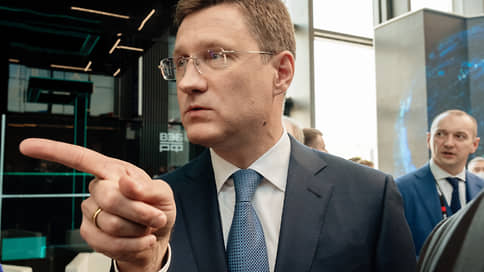The volume of Russian oil supplies to the world market will depend on prices, production and Saudi Arabia
[ad_1]

The Russian Federation may extend the reduction in oil exports that began in the summer to October, but there is no final decision yet. In July-August, the country reduced supplies abroad by 500,000 barrels per day (b/d), and in September it promises to keep the decline at 300,000 b/d. The expected increase in oil supplies in September has not yet affected prices, which remain at $85 per barrel. The reduction in exports allowed domestic companies to lower Urals discounts to Brent and increased the cost of Russian raw materials to more than $70 per barrel.
The government allows the extension of the voluntary reduction in oil exports in October, but such a decision has not yet been made, said Russian Deputy Prime Minister Alexander Novak. “Let’s see. We are now monitoring this situation and evaluating the market together with our colleagues from other countries. We will proceed from what the market will demand, ”quotes TASS official.
We are talking about extending the practice of reducing oil exports, which the Russian Federation began in the summer. Initially, the government promised to cut oil exports in August by 500,000 bpd. Kommersant’s interlocutors explained what would happen due to the reduction in the export schedule of Transneft for the third quarter. Offshore oil exports in August amounted to about 3 million barrels per day.
Russian oil companies reduced oil exports in order to increase oil prices, as well as to reduce the “sanctions” discounts Urals to Brent.
At the same time, Saudi Arabia, Russia’s partner in OPEC +, voluntarily reduced production by 1 million bpd in July and maintained this practice for August and September.
As a result, Brent prices are confidently holding above $85 per barrel in August, and the cost of Russian Urals oil exceeded in July, when oil supplies abroad were sharply reduced, the ceiling ($60 per barrel) of EU and G7 oil prices. In August, the price rose above $70 per barrel, and the discount was reduced to $13.
Russia has already decided that in September it will keep the reduction in oil exports at the level of 300,000 barrels per day, that is, in the context of large-scale repairs at refineries, the country will begin to restore exports compared to August.
According to Reuters, shipments of oil from Primorsk and Ust-Luga for the first ten days of September will grow by 38% compared to the same period last month. It is possible that in the conditions of maintaining oil prices at current high levels, the Russian Federation will continue to increase exports in October. But it is unlikely that she will do it abruptly. It is not yet clear whether Saudi Arabia will extend the voluntary reduction in its own production – a decision may be made ahead of the OPEC + meeting on September 4.
Kommersant’s interlocutors doubt that Russian oil companies will begin to reduce production in September-October, and, thus, the volume of the reduction in exports will depend on free refining capacity. In September and October, the refineries will go for repairs, and the Ministry of Energy is already asking companies to move them to a later date due to the difficult situation on the domestic fuel market. Oleksandr Novak confirmed on August 30 that the ministry is adjusting repair schedules.
As usual, the decision to reduce exports will depend primarily on the price level, believes Vasily Tanurkov from ACRA: “In the current situation, the supply of oil from non-OPEC+ countries is quite stable, so the level of oil demand is most important. So far, the decline in demand from developed countries has been more than offset by growth in demand from developing countries, and in general, there are rather expectations of an increase in oil shortages at the end of the third and fourth quarters. This can be considered a baseline scenario in which OPEC+ countries will reduce cuts.”
The question is what price level will be the trigger for an increase in supply from OPEC +, Mr. Tanurkov notes: apparently, the level of $85 per barrel of Brent is not enough for this.
He emphasizes that one should always consider the risk that a rise in price will allow OPEC+ competitors to increase investment in production, and therefore it is still likely that the participants in the transaction will begin to significantly increase production and exports when the range of $90-100 per barrel of Brent is reached.
[ad_2]
Source link





